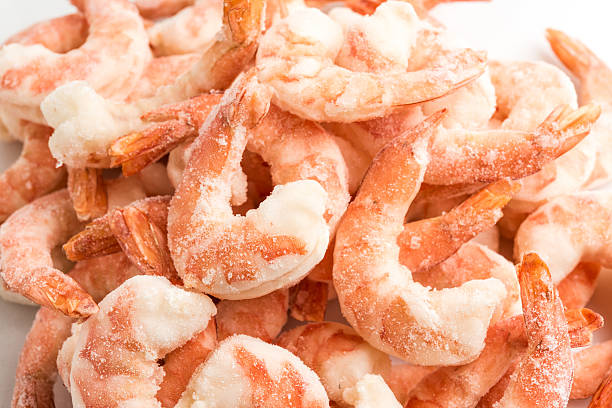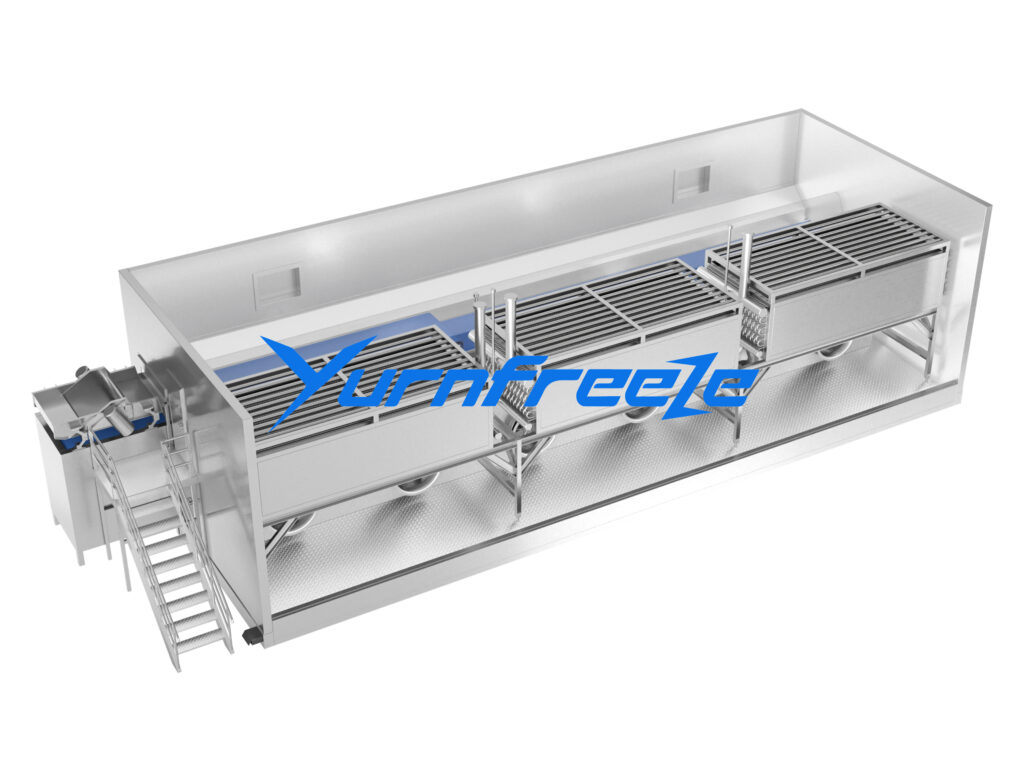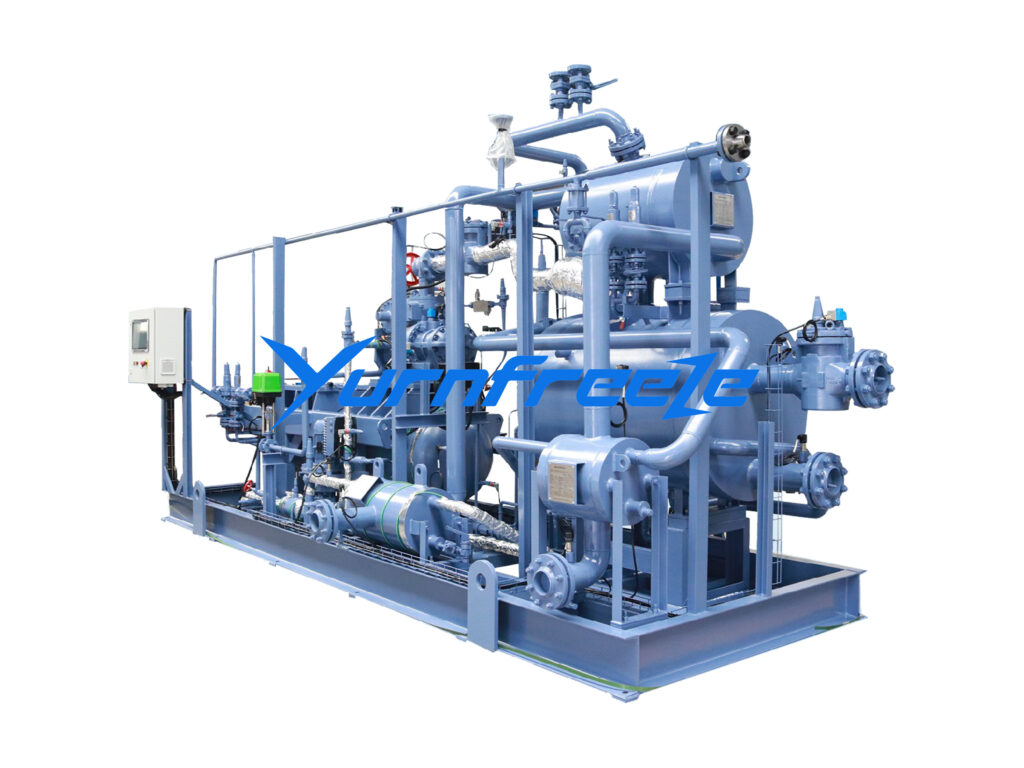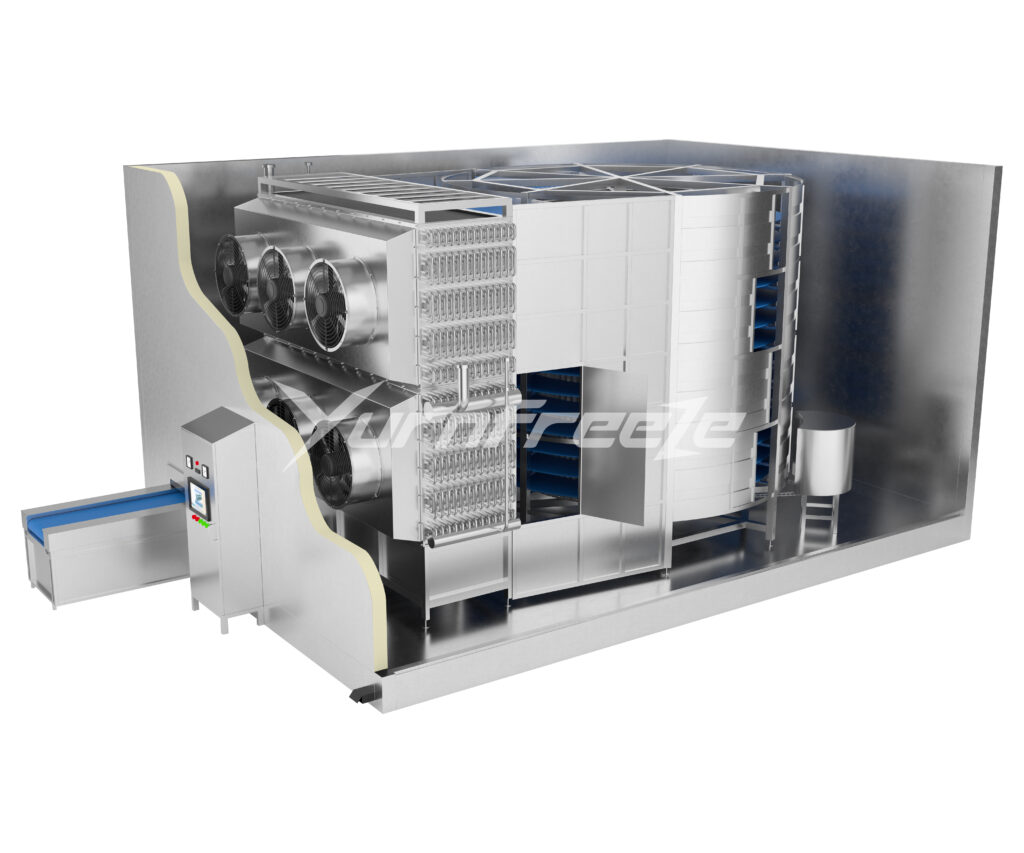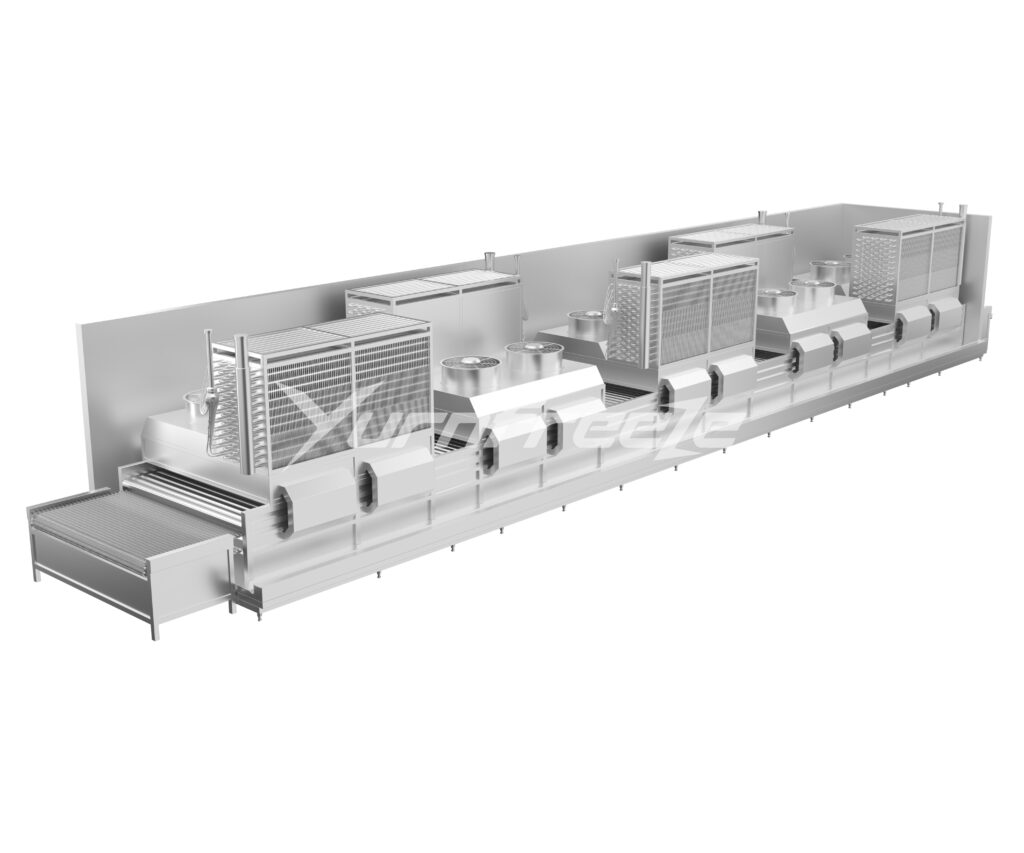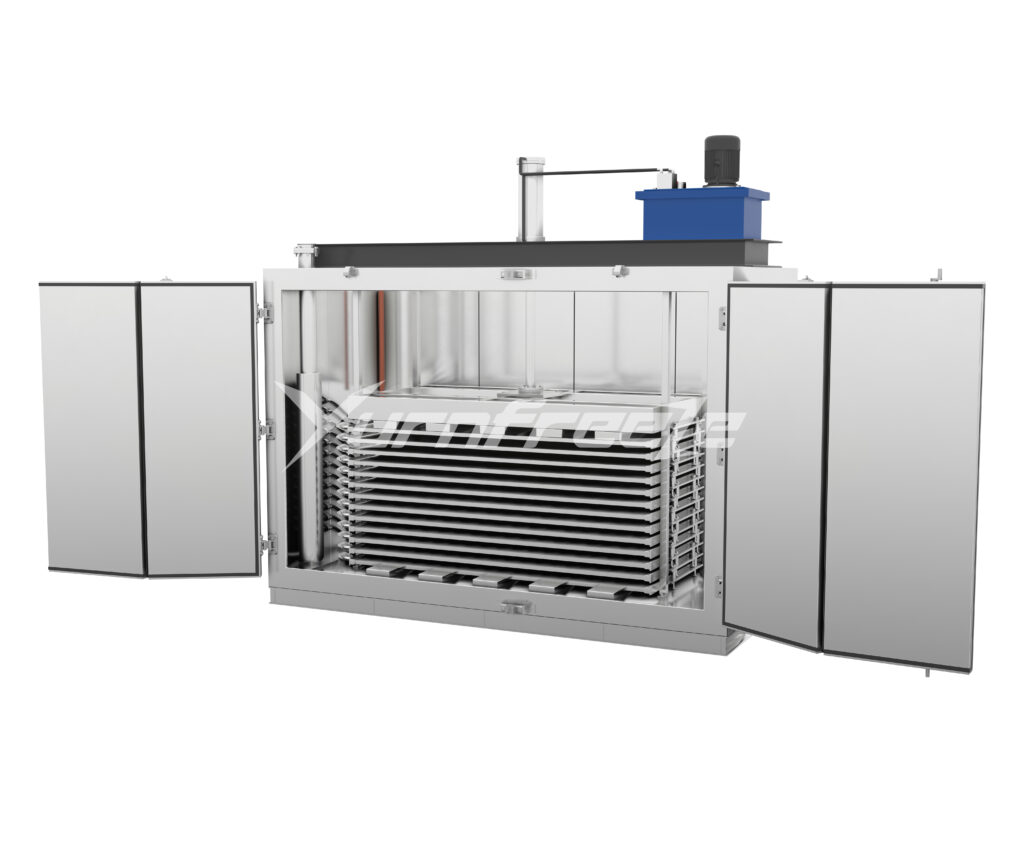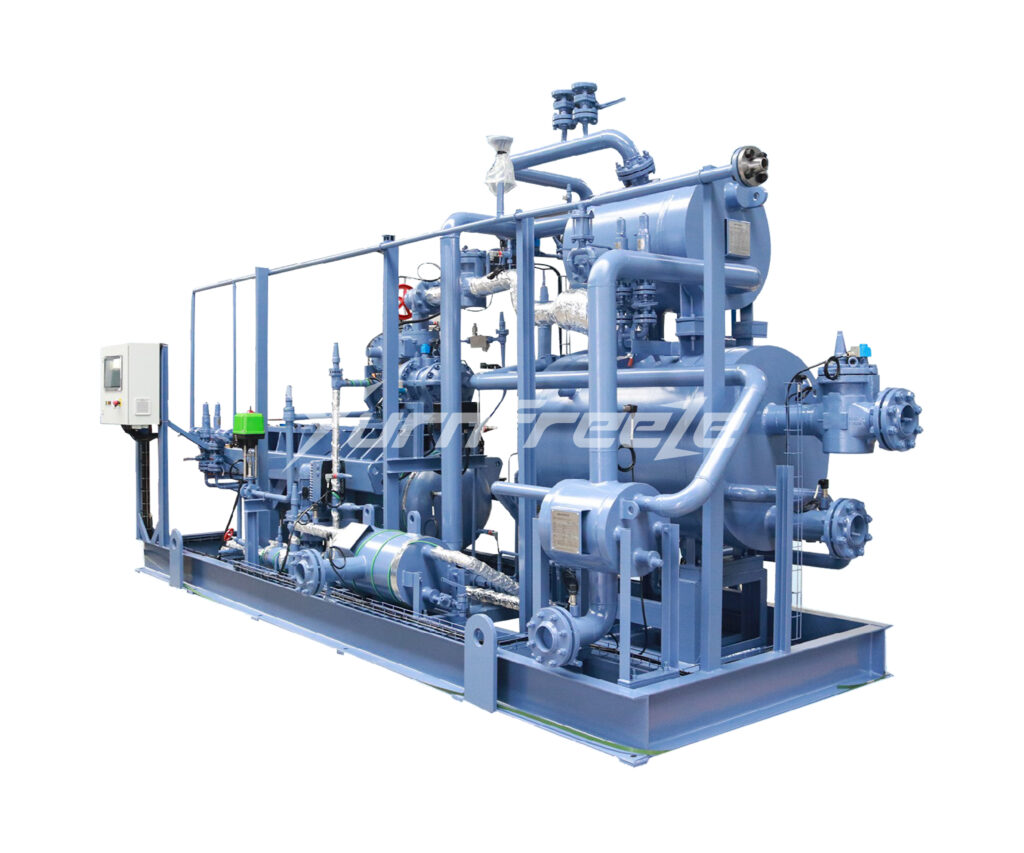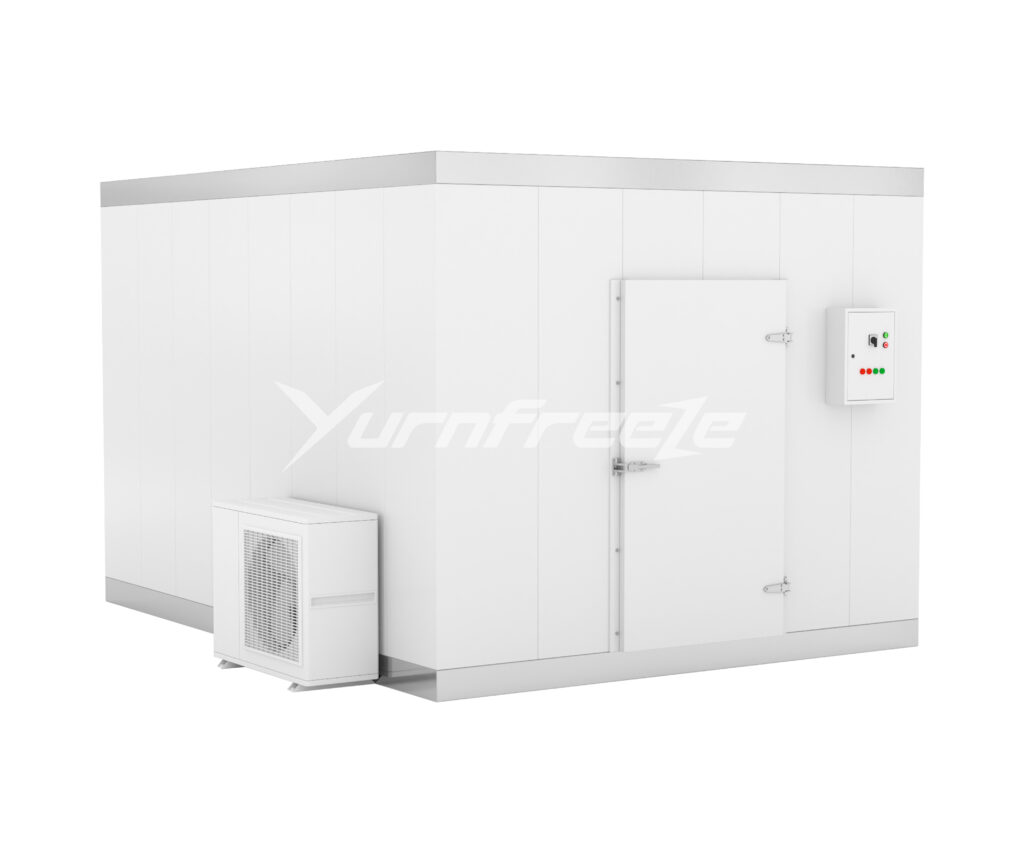Temperature requirements for various commodities in food cold chain logistics
(1): Chilled livestock and poultry meat, chilled aquatic products, non-dairy cream cakes, side dishes, juice, acid (above freezing point – 4°C)
- Frozen livestock and poultry meat and aquatic products, frozen juice, frozen drinks, frozen eggs, quick-frozen vegetables, frozen prepared foods ≤ -18°C;
- Ice cream ≤ -23°C – -25°C;
- Tuna ≤ -50°C;
- Transport temperature ≤ -45°C.
(2): Vegetables, fruits, pasteurized milk, refrigerated eggs, egg liquid, prepared cooked meat, refrigerated lunch boxes, milk cakes, cake embryos, soy products (above freezing point – 7°C).
Different varieties of vegetables and fruits have different suitable storage temperatures, such as:
- Cabbage and potatoes are 0℃-15℃
- Tomatoes are divided into suitable temperatures for early, middle and late stages
- Apples are -1℃~2℃
- Except for fermented soy products
The above are the temperature requirements for various commodities divided in the Shanghai local standard DB31/T388-2007 “Food Cold Chain Logistics Technology and Management Specifications” implemented on October 1, 2010.
Optimal refrigerated temperature and humidity for fruit preservation (reference)
Apple: Suitable refrigeration temperature is -1℃~1℃, humidity is 85%~90%, and storage period is 2-70 days;
Pear: Suitable refrigeration temperature is -1℃~1.5℃, humidity is 85%~90%, and storage period is 1-6 days;
Watermelon: Suitable refrigeration temperature is 2℃~4℃, humidity is 75%~85%, and storage period is 7-10 days;
Cherries: Suitable refrigeration temperature is 0.5℃~1℃, humidity is about 80%, and storage period is 7-21 days;
Coconut: Suitable refrigeration temperature is -4.5℃~-3℃, humidity is about 75%, and storage period is 8-12 days;
Grapes: Suitable refrigeration temperature is -4.5℃~-3℃, humidity is about 75%, and storage period is 8-12 days; The temperature is -1℃~3℃, the humidity is 85%~90%, and the storage period is 1-4 days;
Strawberry: The suitable refrigeration temperature is -0.5℃~1.5℃, the humidity is 75%~85%, and the storage period is 7-10 days;
Orange: The suitable refrigeration temperature is 0℃~1℃, the humidity is 80%~90%, and the storage period is 50-70 days;
Pineapple: The suitable refrigeration temperature is 4℃~12℃, the humidity is 85%~90%, and the storage period is 14-20 days.
Best refrigeration and preservation temperature for common foods (reference)
The best refrigeration temperature for fresh fish is minus 3 degrees.
Meat can be stored for one week at 2 to 5 degrees.
Barrel beer and bottled beer should be stored at 0 to 5 degrees, while bottled beer should be stored at 10 to 25 degrees.
The best temperature for refrigerating fresh milk is 2 to 4 degrees.
Storing tea at minus 20 to 10 degrees can prevent quality deterioration for a long time and keep vitamins intact.
The best temperature for storing alcohol is 5 to 20 degrees.
The best temperature for storing grain: 8 to 15 degrees, which can prevent grain from getting worms.
The best temperature for frozen fish: below minus 3 degrees, at which the fish is not easy to deteriorate and its freshness can be preserved.
The best temperature for storing eggs: below 15 degrees, eggs are not easy to rot and deteriorate.
The best temperature for storing potatoes: 2-4 degrees, too high a temperature will sprout and affect consumption.
The taste of food is very different at different temperatures. Every food has a relatively safe “body temperature”. At this temperature, the food can be stored for a long time while maintaining the best nutrition and taste.
- Quick-frozen food (long shelf life at around -20℃)
The quality of quick-frozen food will be relatively stable between -25℃ and -18℃. If it is higher than this temperature, the shelf life will be shortened accordingly and the taste will also change. If the refrigerator at home does not reach -18℃, it is best to eat the quick-frozen food as soon as possible after opening, otherwise it will easily deteriorate.
Fresh fish (-3℃ is not easy to deteriorate) At this temperature, the fish is not easy to deteriorate, which can ensure its freshness, but it should be eaten as soon as possible and should not be stored in the refrigerator for too long.
- Meat (-18℃ is most suitable)
Pork and beef should be frozen and stored in an environment of -18℃, which can maintain the integrity of the cell wall and is conducive to the retention of water. If refrigerated at -2℃~5℃, meat can be stored for up to one week.
- Vegetables (not below 0℃)
The suitable storage temperature for cabbage, celery, onion, carrot, etc. is about 0℃; the best storage temperature for potatoes is 2℃~4℃, and potatoes will sprout if the temperature is too high; the suitable storage temperature for cucumbers, eggplants, tomatoes, etc. is between 7.2℃~10℃; pumpkins are suitable for storage above 10℃; the best storage temperature for sweet potatoes is above 15℃, and if the temperature is low, they will become stiff and inedible.
- Dishes (4℃ for cold dishes, 60℃ for hot dishes)
Cold dishes can present the best flavor when the temperature is below 4℃; while hot dishes need to be kept at around 60℃. You can put the plate in the refrigerator for 3 minutes before using it to serve cold dishes, or put the plate in the oven for 4 minutes before using it to serve hot dishes, so that the dishes taste best. Hotel chefs usually do this.
- Fruits (different types require different temperatures)
The most suitable storage temperature for bananas is around 13℃; oranges are 4℃~5℃; apples are -1℃~4℃; mangoes are 10℃~13℃; papayas are 7℃; lychees are 7℃~10℃, so lychees are not suitable for storage in the refrigerator.
- Juice (8℃~10℃ is the most nutritious)
All kinds of juice are suitable for drinking at around 8℃~10℃. Once opened, the juice begins to lose nutrients, so don’t store it in the refrigerator for too long. The nutrients of sterile juice made from citrus, grapefruit, pineapple, etc. can be preserved for 7 to 10 days.
- Ice cream (-13℃~-15℃ tastes good)
Ice cream at -13℃~-15℃ tastes the best. At this temperature, putting ice cream in your mouth tastes the best and will not strongly irritate your stomach.
- Soda (4℃~5℃ is the most thirst-quenching)
The best drinking temperature for soda is 4℃~5℃. Soda at this temperature is the most thirst-quenching and will not irritate the stomach.
- Watermelon (the most authentic flavor is around 8℃)
The flavor is purest at around 8℃. Many people are used to cutting watermelons and refrigerating them for consumption. In fact, after a long period of refrigeration, a layer of film will form on the surface of the watermelon pulp, thus losing its taste, and the water in it will easily form ice crystals, which can irritate the throat or cause adverse reactions such as toothache after consumption.
- Honey (with warm water)
Washing honey with warm water at 50℃~60℃ can retain the most nutrients in the honey. Overheated water not only changes the sweet taste of honey and makes it sour, but also denatures the enzyme substances in honey, produces excessive hydroxyformaldehyde, and destroys the nutrients.
Several operating temperature fluctuation control ranges that need to be standardized in the food cold chain
Temperature control in each link of frozen and refrigerated food production and processing (including food raw material collection) will fluctuate due to environmental changes and handover needs, and unified operating specifications are required:
(I) The nominal reference temperature of the frozen food cold chain is below -18℃:
1) The temperature recovery limit during transportation is -15℃, and it is required to drop to -18℃ as soon as possible;
2) Before loading goods in a refrigerated truck, the temperature in the compartment should be pre-cooled to below -10℃;
3) The cold storage should have a closed platform below 15℃;
4) The temperature fluctuation of the cold storage during the day and night should not exceed ±1℃;
5) Frozen food temperature exceeds -12℃ and will be rejected;
6) After loading goods in the frozen display cabinet, it should be kept below -15℃, and the temperature recovery in a short time should not exceed -12℃.
(II) The nominal reference temperature of the cold chain of refrigerated food is below 4℃ and above the freezing point:
1) The temperature limit for transportation, commodity handover, and food temperature recovery is 7℃ (except for some fruits and vegetables);
2) The temperature recovery of the refrigerated display cabinet in a short time shall not exceed 10℃.
(III) The actual ambient temperature of the pre-packaged frozen and refrigerated food should be below 15℃; the external air temperature of the refrigerated display cabinet shall not exceed 24℃ and 55%RH.
Improve the facilities in each link of the cold chain and improve the corresponding management system
All links of the food cold chain need to invest in necessary facilities and equipment as a basic guarantee, with advanced technical support and strict and effective management system. Only when all links of the cold chain work closely together can the entire cold chain operation system be grasped and the quality of frozen and refrigerated food be preserved, otherwise it will be difficult to achieve the expected results. For example:
1) Refrigerated transportation: various refrigerated transportation tools are required, such as refrigerated trucks; temperature recorders such as temperature and humidity measurement; cleaning and disinfection equipment, etc. Necessary vehicle maintenance and repair system; loading and unloading regulations and handover procedures and vehicle dispatching system, etc.
2) Refrigerated storage: necessary cold storage and closed platforms; temperature recorders; loading and unloading vehicles, etc. Necessary cold storage cleaning, defrosting and maintenance system; handover inspection procedures; food storage period management regulations, etc.
3) Sales terminals: various refrigerated display cabinets are required; small supermarkets temporarily store cold storage, etc. Necessary loading regulations; environmental temperature adjustment management, etc.

